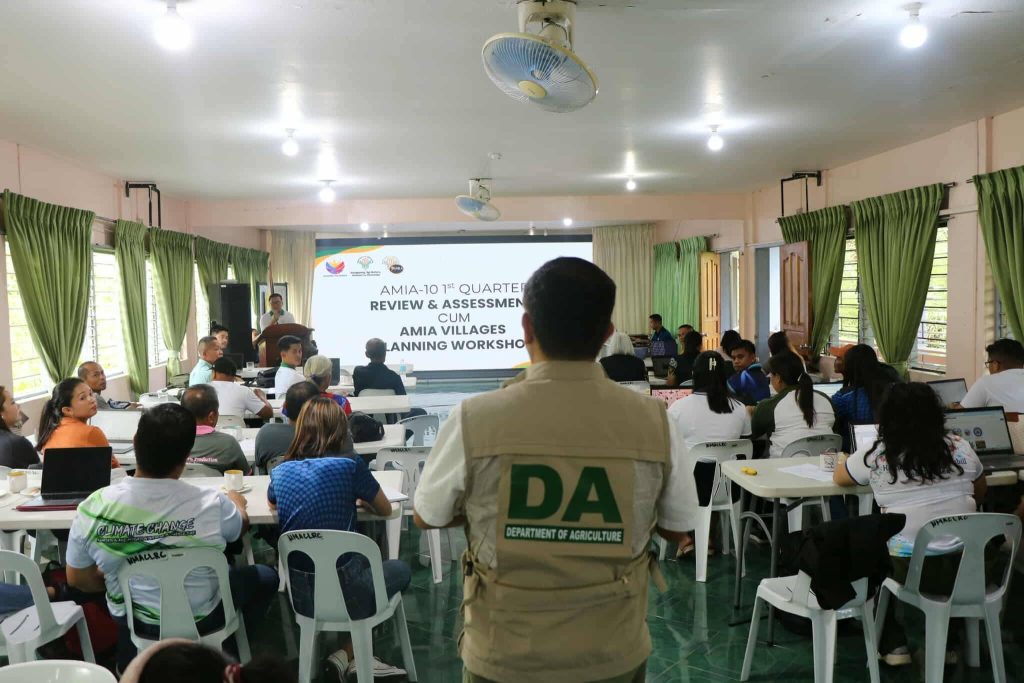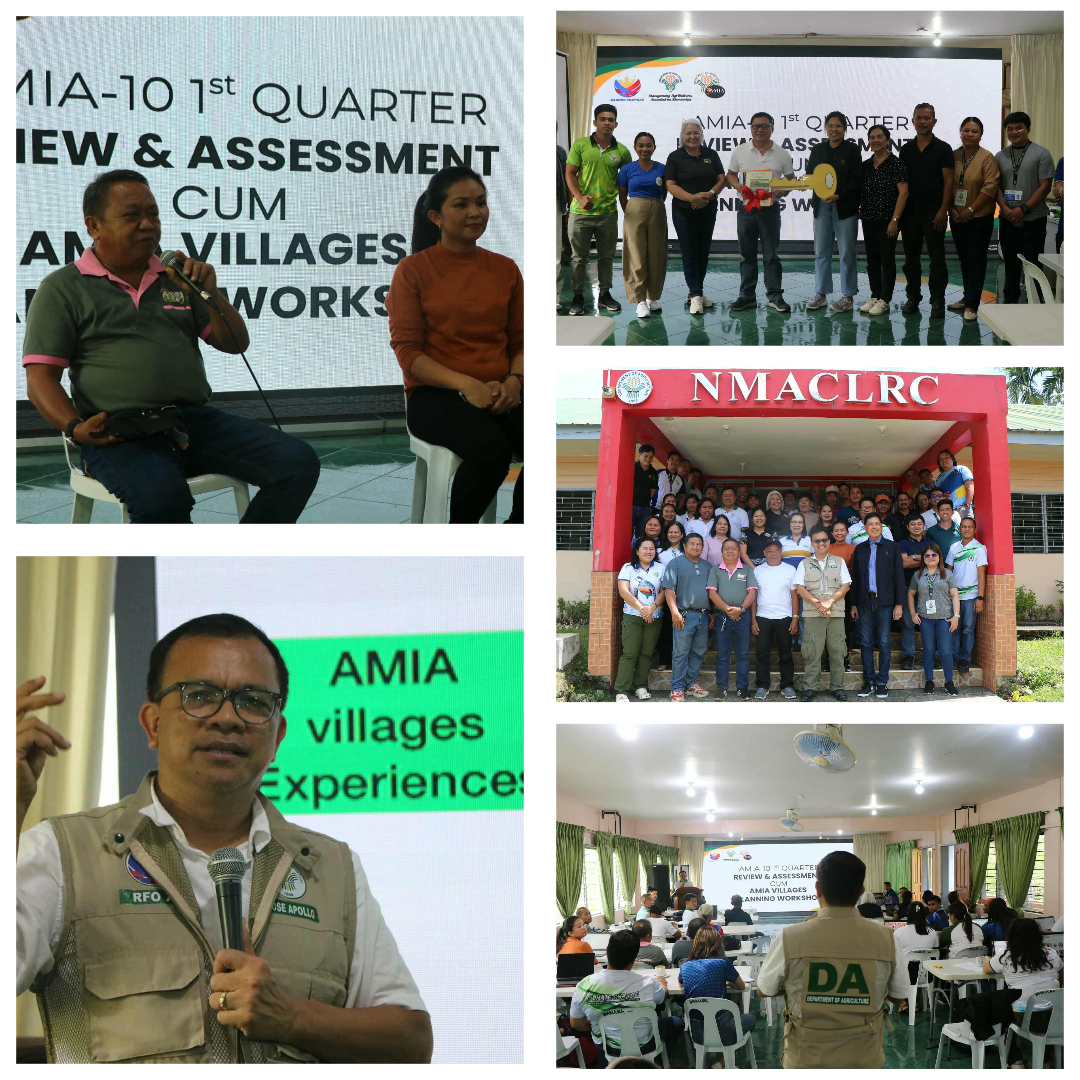
Agri NorMin evaluates progress of AMIA Villages
MALAYBALAY CITY, BUKIDNON – The Department of Agriculture – Regional Field Office 10 (DA-RFO 10) through its Climate Change – Adaptation and Mitigation Initiative in Agriculture (CC-AMIA) program, gathered key stakeholders for the AMIA Villages Planning Workshop held on April 24 to 25 at the Northern Mindanao Agricultural Crops and Livestock Research Complex, in Dalwangan, this city.
April Grace M. Racines, AMIA-10 focal person, said the workshop aims to review and assess the performance of the AMIA program and AMIA Villages across Region 10 as well as to craft proposed plans for their short (CY 2026-2028) and long (CY 2026-2030) term plans. The event also served as a venue for farmers and local government unit representatives from the 13 AMIA Village sites to present their accomplishment reports and best Climate Resilient Agriculture practices.

With the provision of trainings and agri-inputs they received from AMIA-10, Jerry C. Alisbo, secretary of the Guinitan Upland Farmers Association from Brgy. Pagalungan, Cagayan de Oro City, expressed his gratitude for the sustained commitment in addressing their farming needs.
“The program has provided us with additional knowledge in farming, especially [in managing our] hilly to rolling areas. Our expenses in purchasing farming inputs was also reduced through the help of AMIA, resulting in an increased income for our livelihood,” Alisbo reported.
For his part, DA-10 Regional Executive Director Jose Apollo Y. Pacamalan affirmed the agency’s commitment to intensify its efforts to cater to the need of program beneficiaries.
As a way forward, Dir. Pacamalan said, “The integration of AMIA Village experiences into the Municipal/City and Provincial Agriculture Development Investment Plan (M/C/PAFID), alignment with the programs of line government agencies, and its incorporation into the Provincial Agriculture and Fishery Investment and Development Plan are being prioritized.”
He furthered that the said initiative is in pursuit of achieving better agriculture and fishery outcomes, expanding AMIA Villages into AMIA municipalities/cities with a 93% food sufficiency level.# (AMBM)
